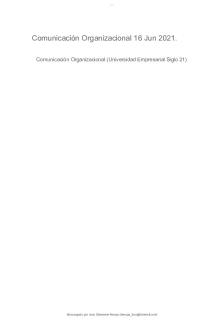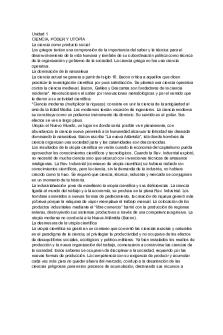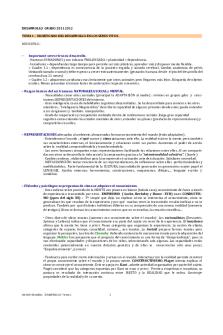1er parcial - International Marketing Defined PDF

| Title | 1er parcial - International Marketing Defined |
|---|---|
| Course | Mercadotecnia Internacional |
| Institution | Universidad de las Américas Puebla |
| Pages | 2 |
| File Size | 96.5 KB |
| File Type | |
| Total Downloads | 16 |
| Total Views | 174 |
Summary
En estos apuntes se encuentran temas sobre los principios de marketing como lo es la definición de este....
Description
-
International Marketing Defined The performance of business activities: Plan, price, promote, direct flow of goods and services for profit. For consumers or users in more than one nation Managing controllable elements Dealing with uncontrollable elements Unique to domestic marketing: Many more unfamiliar problems that require unique strategies. Different levels of uncertainty & uncontrollable elements in each foreign market. Each international market has its own set of unique factors
Aspects of the Firm (Company) Controllable elements: product, place(distribution), promotion, price, packaging, people, research. Aspects of the Domestic Environment Domestic Environment Uncontrollable elements: political and legal forces, economic climate, competitive structure of industry, structure of distribution, geography and infrastructure, market conditions, consumer preferences. Aspects of the Foreign Environment Foreign Environment Uncontrollable and Unfamiliar Elements: political and legal forces, economic forces, competitiveforces, level of technology, structure of distribution, geography and infrastructure, cultural forces, arketconditions, consumerpreferences. The Self-Reference Criterion and Ethnocentrism: both mindsets impede the ability to accurately assess foreign market Self-Reference Criterion (SRC): unconscious reference to own cultural values, experiences, knowledge. Problematic when used as basis for decisions
Ethnocentrism: one’s own company, country or culture is best. Problematic when affluent countries work with less affluent Be Vigilant of SRC and Ethnocentrism to Avoid Business Errors 1. Define situation in home-country’s cultural traits, habits, or norms. 2. Isolate SRC and Ethnocentric influence in each situation and carefully examine how it complicates the issue. 3. Redefine situation without the SRC influence and solve for the optimum business goal. Evolution of Worldwide Trade Multinational Corporations / Enterprises (MNCs or MNEs): many opportunities as national economies grew after WWII. International environment evolved & companies branched out to foreign economies. Economic power gradually became more evenly distributed. Other Developments - Treaties and institutions to facilitate trade: NAFTA (now USMCA or T-MEC), MERCOSUR, CPTPP, ASEAN, APEC. Emergence of the European Union. Entrance of China into WTO in 2001. - Power expected to shift to more countries: New market opportunities in developing countries. Some countries are supporting their companies to invest internationally. Protectionism The Reality of World Trade: countries tend to seek protection their home markets as populist leaders gain influence as competition increases, if national economies struggle Use barriers for protection against foreign investment & imports, tariffs, non-tariff measures, quotas, content, standards, compliance with requirements, etc....
Similar Free PDFs

1er parcial de marketing
- 21 Pages

Marketing - 1er Parcial
- 25 Pages

Marketing 1er parcial
- 27 Pages

1ER Parcial
- 22 Pages

1er parcial
- 34 Pages

1er parcial
- 6 Pages

1er parcial
- 17 Pages

Resumen 1er parcial
- 7 Pages

Desarrollo 1er Parcial
- 47 Pages

Dermatología 1er Parcial UAEH
- 4 Pages

Examen 1er parcial filosofia
- 5 Pages

Resumen 1er parcial - Brock
- 35 Pages

Resumen 1er parcial Costos
- 31 Pages
Popular Institutions
- Tinajero National High School - Annex
- Politeknik Caltex Riau
- Yokohama City University
- SGT University
- University of Al-Qadisiyah
- Divine Word College of Vigan
- Techniek College Rotterdam
- Universidade de Santiago
- Universiti Teknologi MARA Cawangan Johor Kampus Pasir Gudang
- Poltekkes Kemenkes Yogyakarta
- Baguio City National High School
- Colegio san marcos
- preparatoria uno
- Centro de Bachillerato Tecnológico Industrial y de Servicios No. 107
- Dalian Maritime University
- Quang Trung Secondary School
- Colegio Tecnológico en Informática
- Corporación Regional de Educación Superior
- Grupo CEDVA
- Dar Al Uloom University
- Centro de Estudios Preuniversitarios de la Universidad Nacional de Ingeniería
- 上智大学
- Aakash International School, Nuna Majara
- San Felipe Neri Catholic School
- Kang Chiao International School - New Taipei City
- Misamis Occidental National High School
- Institución Educativa Escuela Normal Juan Ladrilleros
- Kolehiyo ng Pantukan
- Batanes State College
- Instituto Continental
- Sekolah Menengah Kejuruan Kesehatan Kaltara (Tarakan)
- Colegio de La Inmaculada Concepcion - Cebu


